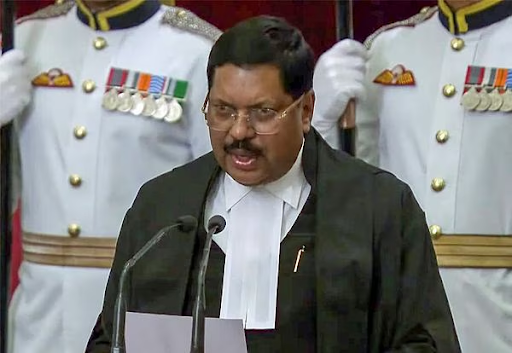Description

Copyright infringement not intended
Context: International Mother Language Day is celebrated on 21st February 2023 with the theme “Multilingual education – a necessity to transform education" to promote awareness about linguistic and cultural diversity and to promote multilingualism.
Historical Background
- The Partition of India was marred with massive bloodshed, displacement and generational trauma.
- The newly-formed country ‘Pakistan’ had a fundamental issue. The country was divided into two parts on either side of India, East and West Pakistan, and both parts had little in common accepted religious identity.
- East Pakistan was Bengali-speaking and was culturally very different from the Urdu-speaking West.
- The language issue became a central source of rising tensions between the Eastern and Western parts of Pakistan.
- In 1948, the Pakistani government announced that Urdu would be the only official language of the state.
- The announcement was opposed by the people in East Pakistan.
- In March 1948, Muhammad Ali Jinnah, the Governor General of Pakistan, declared that the language agitation was intended to divide Pakistani Muslims. He underlined that “Urdu and only Urdu” would be the state language of the country.
- This issue continued to build up, often leading to protests in East Pakistan.
- On 21st February 1952, All-Party Central Language Action Committee decided to hold large-scale strikes and demonstrations in Dhaka, East Pakistan.
- The authorities imposed section 144 and banned any large-scale gathering.
- The authorities fired tear gas shells and then arrested several student leaders for violating Section 144, further inflaming the protestors.
- The agitated students walked towards the East Bengal Legislative Assembly, they were demanding the release of fellow protestors, to stop them, the police opened fire, killing many students and wounding hundreds.
- As news of the firing spread, the people of Dhaka stepped onto the streets.
- The next day, as thousands gathered at the university campus, the police fired at the crowd, again killing multiple protesters.
- The agitation spread to many cities across East Pakistan.
- The government gagged the media and blamed “Hindus and communists” for instigating the violence.
- In 1954, the Muslim League lost assembly elections in the East.
- In 1956, when the constitution of Pakistan was enacted, Bangla was adopted as the official language of Pakistan along with Urdu.
- The tussle between East and West magnified with time. Eventually, this led to the liberation of Bangladesh in 1971.
.jpeg)
International Mother Language Day
- 21st February was declared International Mother Language Day by UNESCO in 1999. It has been observed throughout the world since 21st February 2000.
- The declaration came up in tribute to the Language Movement done by the Bangladeshis (then the East Pakistanis).
- It was formally recognized by the United Nations General Assembly with the adoption of UN resolution 56/262 in 2002.
- Mother Language Day is part of a wider initiative "to promote the preservation and protection of all languages used by peoples of the world".
- The idea to celebrate International Mother Language Day was the initiative of Bangladesh. In Bangladesh, the 21st of February is the anniversary of the day when the people of Bangladesh (then East Bengal of Pakistan) fought for recognition of the Bengali language.
Mother tongues in India
- The Union Ministry of Home Affairs (MHA) has completed the Mother Tongue Survey of India (MTSI).
- The objective of the survey is to preserve and analyse the original flavour of each indigenous Mother Tongue, it has been planned to set up a web archive at the National Informatics Centre (NIC).
- The survey also documents the linguistic features of the selected languages.
- As per 2011 linguistic census data, more than 19,500 languages grouped into 121 mother tongues are spoken in India.
- 6% of the population declared the Hindi language as their mother tongue.
- Bengali is the 2nd most popular mother tongue accounting for 8% of the population.
- The new National Curriculum Framework (NCF) for the foundational stages of education has recommended that the mother tongue should be the primary medium of instruction in schools for children up to 8 years of age.
- Evidence from research confirms the importance of teaching children in their mother tongue during the foundational years and beyond
- Children learn concepts most rapidly and deeply in their home language, the primary medium of instruction would optimally be the child’s a home language/ mother tongue/ familiar language in the Foundational Stage,” it states.
- According to the Census of 2011, in India, there are 121 mother tongues, of which 22 languages are included in the eighth schedule of our Constitution, and account for the mother tongue of 96.72% of Indians.
- The National Education Policy (NEP) 2020 recommended the use of the mother tongue as a medium of instruction in schools whenever possible.

Development of the Hindi Language
- Under Article 351, The Indian Constitution imposes a duty upon the Centre to promote the spread and development of the Hindi language.
- The 8th Schedule of the Constitution specifies 22 languages (originally 14 languages). These are Assamese, Bengali, Bodo, Dogri (Dongri), Gujarati, Hindi, Kannada, Kashmiri, Konkani, Mathili (Maithili), Malayalam, Manipuri, Marathi, Nepali, Odia, Punjabi, Sanskrit, Santhali, Sindhi, Tamil, Telugu and Urdu.
- Sindhi was added by the 21st Amendment Act.
- Konkani, Manipuri and Nepali were added by the 71st Amendment Act.
- Bodo, Dongri, Maithili and Santhali were added by the 92nd Amendment Act.


Must Read: https://www.iasgyan.in/daily-current-affairs/official-language-15
https://www.pib.gov.in/PressReleasePage.aspx?PRID=1900994
















